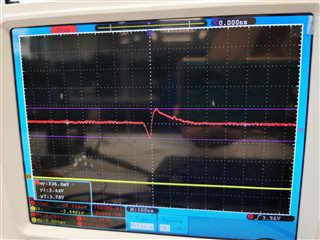Dear all,
We have a design with TPS610995 and the LOAD powered from this dc/dc regulator needs that its power supply voltage changes from 0 to 2.1 V in less than 1 ms. As the dc/dc has a softstart and the LOAD needs 100 uF input capacitor, we are not able to meet this requirement. We took some measures and rise time was around 3.3 ms.
So, is it possible to deactivate softstart or have a version of this dc/dc without softstart?
We have reviewed the TPS610995 datasheet and we could see that the output capacitor must be between 10 uF and 100 uF. However, in the Capacitor selection we found the following sentence: " The TPS61099x is optimized to work with the inductor from 1 μH to 2.2 μH, so the minimal output capacitor value is 20 μF (nominal value). Increasing the output capacitor makes the output ripple smaller in PWM mode."
Assuming we cannot deactivate the softstart, we reduced the output capacitor to reduce the rise time. Now we have a 2.2 uH coil and approximatelly 10.6 uF output capacitor formed by several capacitors. The output voltage is 3.6 V and the maximum peak output current will be 800 mA. Input voltage can vary between 3.6 V and 2 V. The load can work from 2.1 V to 4.2 V.
So, which problems could we have with this configuration (output capacitance of 10.6 uF)? Do you recommend to increase a little more the output capacitor up to 20uF?
Best regards,



